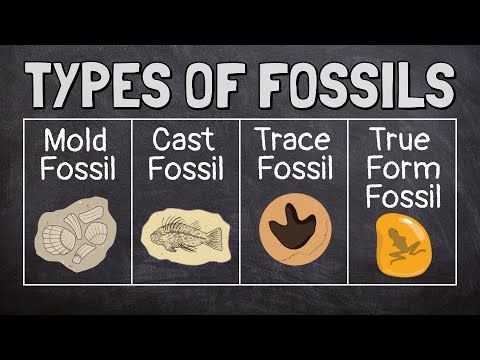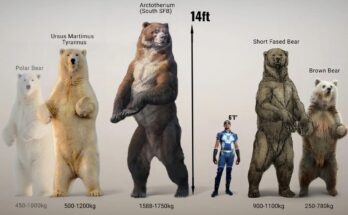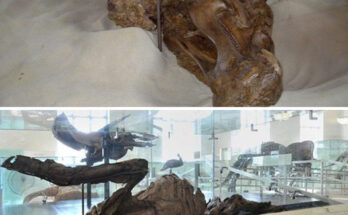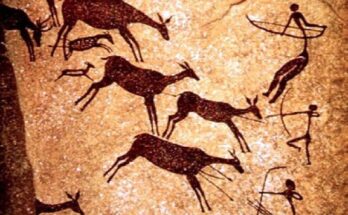Understanding the Types of Fossils: A Comprehensive Guide
Fossils are fascinating windows into the ancient past, offering us a glimpse into the lives of organisms that roamed the Earth millions of years ago. They come in various forms, each with unique characteristics and formation processes. This detailed guide explores the four primary types of fossils—Trace Fossils, Mold Fossils, Cast Fossils, and True Form Fossils—based on an informative chart designed to educate and inspire curiosity about paleontology.

Trace Fossils
Trace fossils are evidence of an organism’s activity rather than the organism itself. Scientists use these fossils to understand the behavior and movements of ancient life forms. They are created when an animal walked in mud or left an impression that later hardened into rock. Examples include footprints, burrows, and coprolites (fossilized dung). The chart highlights that the soft tissue of the organism often decays, leaving behind only the trace of its presence. This type of fossil provides invaluable clues about the daily lives and environments of prehistoric creatures, offering a narrative of their interactions with their surroundings.
Mold Fossils
Mold fossils are a type of fossil that forms when an organism is buried in sediment and then decays or dissolves, leaving an impression or cavity in the rock. This impression shows the evidence of the organism’s activity. The chart notes that the actual organism is no longer present, but the mold preserves the shape and structure of the once-living entity. These fossils are particularly significant for studying the external anatomy of ancient plants and animals, providing a clear outline of their form against the backdrop of the surrounding rock.
Cast Fossils
Cast fossils are created when a mold fossil is filled with minerals or other materials that harden over time, producing a positive image of the original organism, plant, or other entity. Once the organism has been dissolved away, the cavity it left behind can be filled with sediment or minerals, forming a cast. The chart explains that this process results in a three-dimensional replica of the original life form, often resembling a sculpture. Cast fossils are excellent for studying the internal and external features of organisms, offering a tangible connection to their ancient existence.
True Form Fossils
True form fossils are the most recognizable type, showing a negative image of the original organism in 3D, formed by sticking out from the rock. These fossils include footprints, burrows, and coprolites, and they often retain the color and texture of the organism intact. The chart emphasizes that true form fossils provide a direct and detailed representation of the organism, preserving its structure as it was when it became fossilized. This type of fossil is especially prized by scientists and enthusiasts alike for its lifelike quality, offering a vivid snapshot of prehistoric life.
Visual Insights
Accompanying the chart are vivid images that bring these fossil types to life. A photograph of ammonite shells illustrates mold fossils, showcasing the intricate spiral patterns preserved in the rock. Another image features a well-preserved trilobite, a classic example of a true form fossil, highlighting its detailed exoskeleton. These visuals enhance the educational value of the chart, making it an engaging tool for learners of all ages.

Why Fossils Matter
Understanding the different types of fossils helps us piece together the puzzle of Earth’s history. Trace fossils reveal behaviors, mold and cast fossils provide structural insights, and true form fossils offer a near-perfect preservation of ancient life. Together, they contribute to our knowledge of evolution, climate changes, and the ecosystems of the past.
Whether you’re a student, educator, or fossil enthusiast, this guide serves as a valuable resource for exploring the wonders of paleontology. Dive deeper into the world of fossils and discover the stories they hold within the layers of the Earth!
This detailed description is perfect for a website post, providing an in-depth look at each fossil type while incorporating the visual elements from the chart to engage readers.



